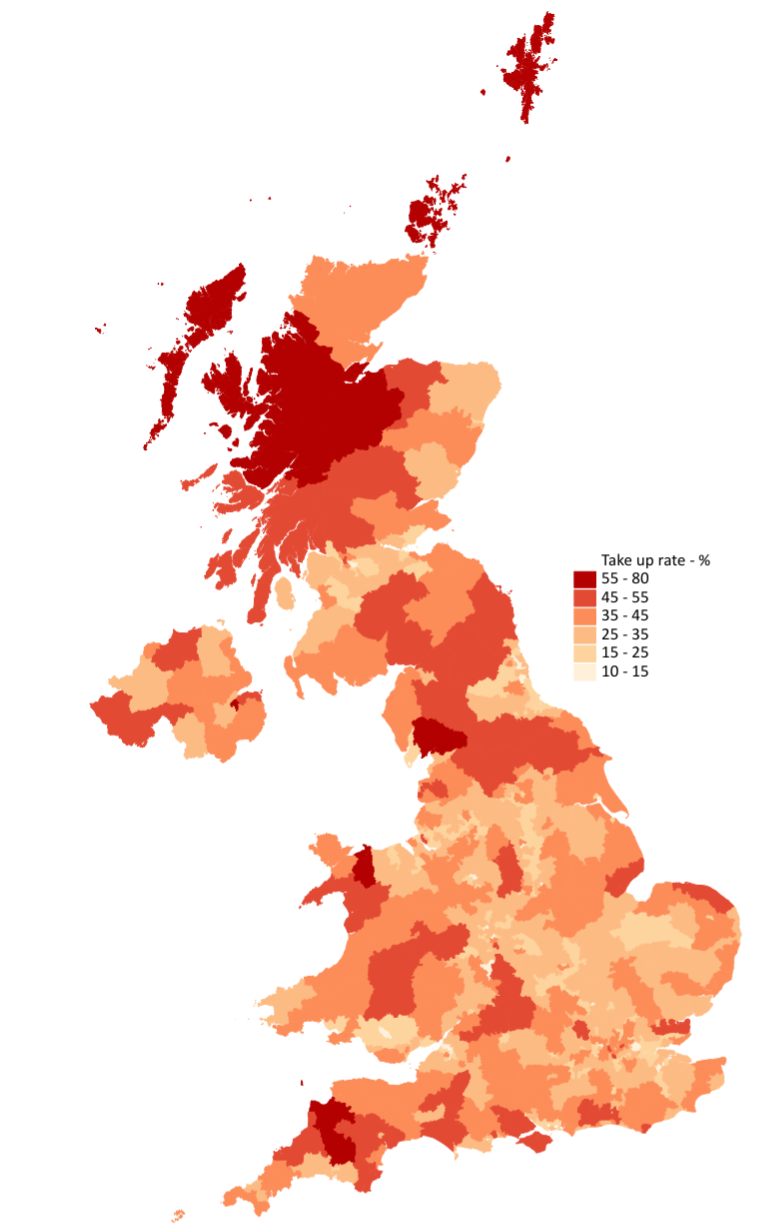The Eat Out to Help Out scheme aimed to support economic recovery after the first COVID-19 lockdown ended in the UK. Nicolás González-Pampillón, Gonzalo Nunez-Chaim and Katharina Ziegler (LSE) find that the policy led to higher footfall in retail and recreation venues on days when the discount was available, but it did not encourage people to go out for other purposes during the scheme or to eat out once it ended.
The UK’s Eat Out to Help Out (EOTHO) programme – implemented in August 2020 after the first national lockdown had ended – aimed to boost demand and protect jobs in the food service sector. Participating businesses in EOTHO offered a 50% discount from Monday to Wednesday, up to £10 per person, on food and non-alcoholic drinks consumed on the premises.
We show that EOTHO induced 5-6% more people to visit retail and recreation venues than would have been expected, and this rise was concentrated on specific days when the discount was available (Mondays to Wednesdays in August). However, the programme failed to encourage people to go out for other purposes or to eat out after the discount ended. Also, we observe a temporary increase in the number of job adverts by 7-14% on the Indeed jobs website in the food preparation and service category. As with footfall, we did not find evidence of an increase in the number of job adverts in other industries, suggesting the effect on recruitment was concentrated on food establishments.
We looked at the impact of the programme on footfall using daily mobility data from Google and on employment using daily data on job posts from Indeed UK. Given the policy objectives of EOTHO, an increase in the demand for food services is likely to be reflected in higher levels of footfall in recreational activities and more jobs adverts as restaurants, pubs and cafes may hire more staff. Despite these not being ideal outcomes for measuring the direct impact of the programme on the economy, both indicators are timely and helpful to understand some of the effects of the scheme.

Our analysis concentrates on the post-lockdown period and focuses on footfall in the retail and recreation category and on job posts in the food preparation and service category. Our empirical strategy relies on the observed spatial variation in uptake of the scheme, since not all eligible businesses participated in the programme. Figure 1 presents the variation on take-up of EOTHO across the UK, showing higher levels of participation in Scotland, Northern and South West England. We exploit this spatial variation comparing locations with different levels of take-up before and after the introduction of the policy.
Figure 1: Variation in take-up of EOTHO across the UK

Note: The figure presents the take-up rate by the end of the scheme on 31 August 2020 for every parliamentary constituency in the UK. The darker the colour, the higher the take-up rate. Source: Authors’ calculation with data from HMRC’s GitHub repository.
While our results provide evidence on some of the economic impacts, several questions remain unanswered due to lack of representative and comprehensive data on key outcomes. We do not know if job posts meant new jobs, and if so, whether the new hires remained in employment after the programme ended. We also do not know if EOTHO increased turnover or probability of firm survival. Finally, the footfall data (from Google) could be biased towards younger and better-off individuals, who may also be more inclined to go out. Similarly, online job posts (from Indeed) may be biased towards larger businesses, which are also more likely to have capacity to hire more staff. If this is the case, our results may overestimate the overall impact of EOTHO. Detailed secondary data sources (e.g. the Inter-Departmental Business Register) will allow us to address these problems. But they have a reporting lag of at least a year, so cannot yet be used to measure the effect of the programme on firm survival, turnover and employment.
These issues, as well as the interaction between different policies (e.g. the Coronavirus Job Retention Scheme) complicate any cost-benefit calculation of the programme. On top of that, there is evidence indicating the increase in footfall due to EOTHO had an adverse effect on new COVID-19 cases. Thus, any economic gains from the scheme may have come at the cost of more infections. Further research – using administrative data – is needed to assess the overall cost-effectiveness of EOTHO and similar programmes aimed at supporting the economic recovery after COVID-19 lockdowns. This is crucial given the limited evidence available to guide policy responses, the high uncertainty of the context and the large amount of resources spent on many interventions.
Lockdown measures, while needed to save lives, pose a major threat to the survival of firms and to employment for many people. The hospitality sector was particularly hard-hit by restrictions introduced to stop the spread of COVID-19. In addition to helping firms and people while lockdown measures are in place, the policy debate must also consider how best to support the recovery once lockdown restrictions are relaxed.
This post represents the views of the authors and not those of the COVID-19 blog, nor LSE. It is based on Recovering from the first COVID-19 lockdown: economic impacts of the UK’s Eat Out to Help Out scheme, published by the Centre for Economic Performance.





